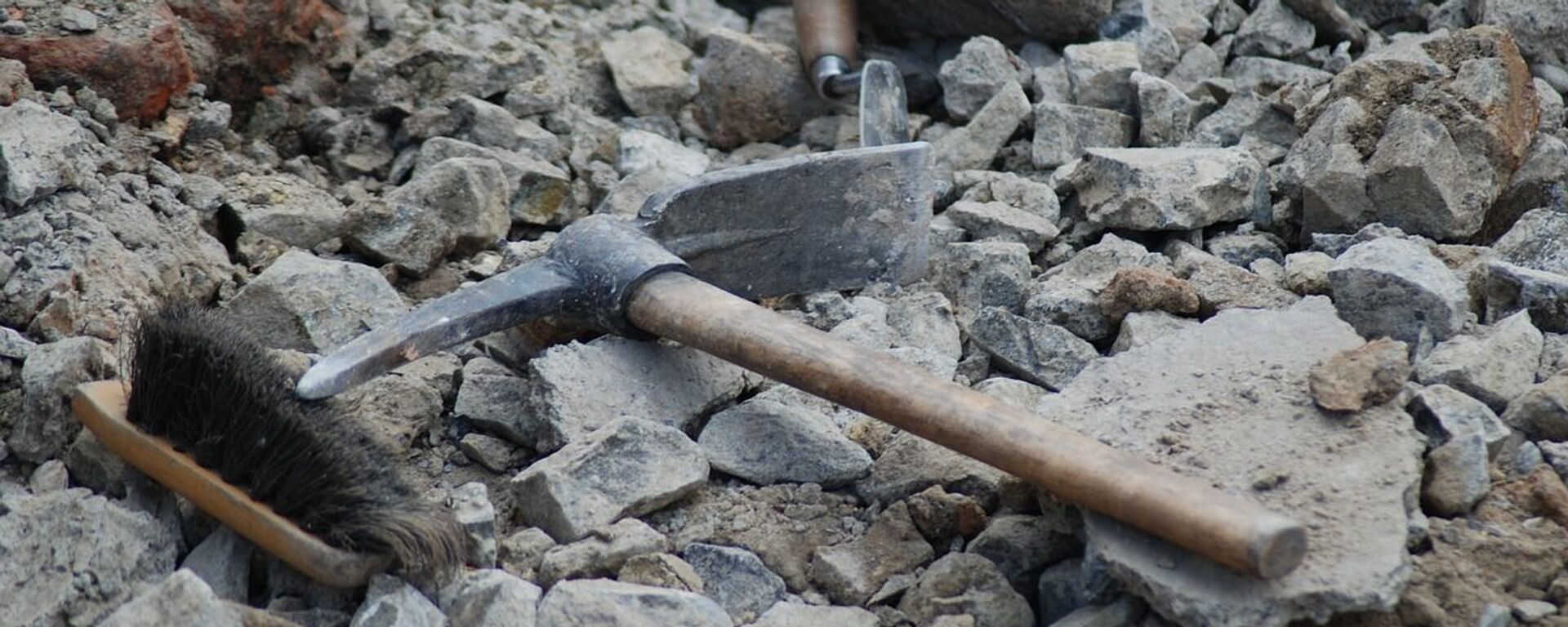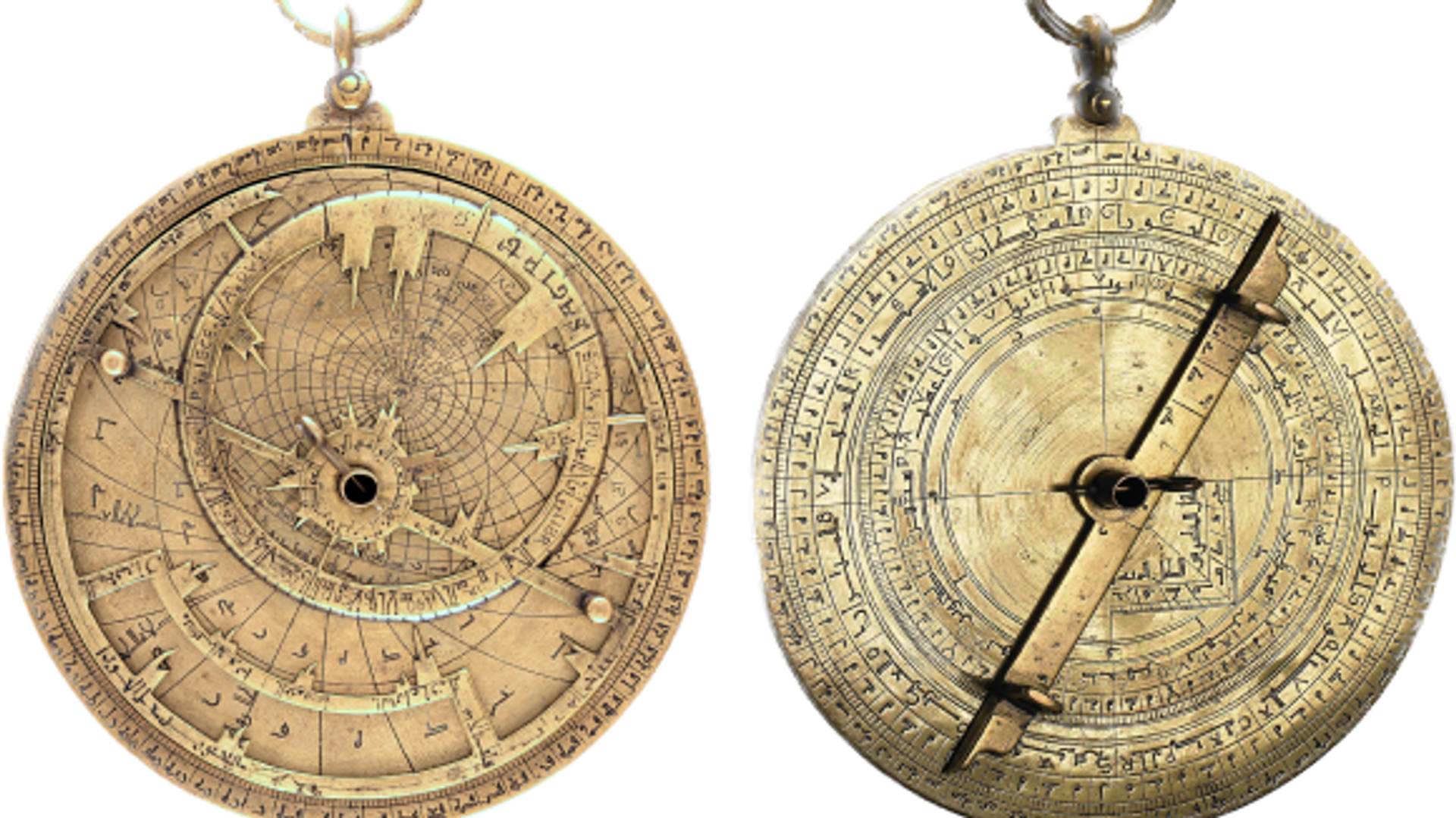https://sputnikglobe.com/20240305/extraordinary-ancient-device-reveals-bond-between-religion-and-science-1117145721.html
'Extraordinary': Ancient Device Reveals Bond Between Religion and Science
'Extraordinary': Ancient Device Reveals Bond Between Religion and Science
Sputnik International
The discovery of a device over 1000 years-old tells a story of mutual knowledge creation, development, and sharing by Christians, Jews, and Muslims in 11th-century Spain.
2024-03-05T22:45+0000
2024-03-05T22:45+0000
2024-03-05T22:45+0000
beyond politics
science & tech
society
spain
verona
italy
cambridge university
christians
muslims
jews
https://cdn1.img.sputnikglobe.com/img/07e8/03/05/1117145369_0:46:580:372_1920x0_80_0_0_4f640fef899838d1efb71dd3bbf86589.png
A Cambridge University researcher has made an astonishing discovery of an old instrument to map stars and tell time while browsing the internet for a picture of Ludovico Moscardo, a collector and Italian nobleman from the 17th century.About a year ago, Federica Gigante discovered a metal disc with a ring at the top in a Verona museum where Moscardo's portrait was displayed. She later learned it was a rare astrolabe while visiting the same museum three months later and seeing its brass features in the sunlight.The astrolabe, crafted in Andalucía, passed through the hands of Muslims, Jews, and Christians over ten centuries. Its engravings, initially in Arabic and later in Hebrew, narrate the story of knowledge creation, development, and exchange among scholars residing in al-Andalus, a then Muslim-ruled region of Spain.Gigante, an expert in Islamic art, observed Hebrew translations of Arabic names of astrological signs on the astrolabe. She realized that one of the instrument's plates was marked with "Toledo" and "Córdoba" on opposite faces.Star positions found on the instrument aligned with those on astrolabes from the 1060s and 1070s. The exact order of the Verona astrolabe's movement is difficult to ascertain. Gigante believes the item was produced in Andalucía, Spain, and taken to North Africa, possibly Morocco, before coming into Jewish possession.The astrolabe bears two sets of Hebrew inscriptions - one meticulously carved, the other appearing as scratches, suggesting prolonged use by a community. The final engravings, in Western numerals, were likely added by someone proficient in Italian or Latin.Gigante assumes that the astrolabe eventually found its way into Moscardo's collection and later into the possession of the Miniscalchi family, who established the museum in Verona, by marriage.Recently Gigante published an article about the astrolabe in the journal Nuncius; she explained discovering the device was a perfect blend of her love for scientific instruments and research on the spread of Islamic artifacts and technology to Europe.
https://sputnikglobe.com/20230922/ancient-lincoln-logs-suggest-human-ancestors-were-more-clever-than-previously-thought-1113574579.html
https://sputnikglobe.com/20220914/from-techno--signatures-to-astro-archeological-artifacts-search-continues-for-alien-life-1100766853.html
spain
verona
italy
Sputnik International
feedback@sputniknews.com
+74956456601
MIA „Rossiya Segodnya“
2024
Chimauchem Nwosu
https://cdn1.img.sputnikglobe.com/img/07e7/09/01/1113046371_0:99:1536:1635_100x100_80_0_0_9c5c627283eca931c39fe4852bbb301c.jpg
Chimauchem Nwosu
https://cdn1.img.sputnikglobe.com/img/07e7/09/01/1113046371_0:99:1536:1635_100x100_80_0_0_9c5c627283eca931c39fe4852bbb301c.jpg
News
en_EN
Sputnik International
feedback@sputniknews.com
+74956456601
MIA „Rossiya Segodnya“
Sputnik International
feedback@sputniknews.com
+74956456601
MIA „Rossiya Segodnya“
Chimauchem Nwosu
https://cdn1.img.sputnikglobe.com/img/07e7/09/01/1113046371_0:99:1536:1635_100x100_80_0_0_9c5c627283eca931c39fe4852bbb301c.jpg
astrolabe, federica gigante, verona museum, ludovico moscardo, islamic artifacts, jewish scholars, al-andalus, spain, andalucía, hebrew inscriptions, islamic art, nuncius journal, scientific instruments, spread of islamic technology, north africa, miniscalchi family, historical discovery.
astrolabe, federica gigante, verona museum, ludovico moscardo, islamic artifacts, jewish scholars, al-andalus, spain, andalucía, hebrew inscriptions, islamic art, nuncius journal, scientific instruments, spread of islamic technology, north africa, miniscalchi family, historical discovery.
'Extraordinary': Ancient Device Reveals Bond Between Religion and Science
The discovery of a device over 1000 years-old tells a story of mutual knowledge creation, development, and sharing by Christians, Jews, and Muslims in 11th-century Spain.
A Cambridge University researcher has made an astonishing discovery of an old instrument to map stars and tell time while browsing the internet for a picture of Ludovico Moscardo, a collector and Italian nobleman from the 17th century.
About a year ago, Federica Gigante discovered a metal disc with a ring at the top in a Verona museum where Moscardo's portrait was displayed. She later learned it was a rare astrolabe while visiting the same museum three months later and seeing its brass features in the sunlight.
“I saw it was a lot more ancient than they’d realized... But at that point, I had no idea it had Hebrew on it. It was only when we took it to a side room, and I started to analyze it – by chance, I was sitting by a window, and the raking light came in – that I started to see these scratches. They were very strange because they weren’t the scratches you’d expect from use. I thought maybe I was just a bit too tired, but more kept coming out,” Gigante told news sources.
The astrolabe, crafted in Andalucía, passed through the hands of Muslims, Jews, and Christians over ten centuries. Its engravings, initially in Arabic and later in Hebrew, narrate the story of knowledge creation, development, and exchange among scholars residing in al-Andalus, a then Muslim-ruled region of Spain.

22 September 2023, 04:17 GMT
Gigante, an expert in Islamic art, observed Hebrew translations of Arabic names of astrological signs on the astrolabe. She realized that one of the instrument's plates was marked with "Toledo" and "Córdoba" on opposite faces.
Star positions found on the instrument aligned with those on astrolabes from the 1060s and 1070s. The exact order of the Verona astrolabe's movement is difficult to ascertain. Gigante believes the item was produced in Andalucía, Spain, and taken to North Africa, possibly Morocco, before coming into Jewish possession.
“There’s an added dedication or signature on the object that reads: ‘For Isaac, the work of Jonah… They’re both Jewish names so it’s very likely that by then the astrolabe had passed into Jewish ownership. But it’s interesting that it’s written in Arabic. Although it was probably in the hands of some Jews, Arabic was the lingua franca and was used by Jews as much as Muslims and Christians,” the historian noted.
The astrolabe bears two sets of Hebrew inscriptions - one meticulously carved, the other appearing as scratches, suggesting prolonged use by a community. The final engravings, in Western numerals, were likely added by someone proficient in Italian or Latin.
Gigante assumes that the astrolabe eventually found its way into Moscardo's collection and later into the possession of the Miniscalchi family, who established the museum in Verona, by marriage.
Recently Gigante published an article about the astrolabe in the journal Nuncius; she explained discovering the device was a perfect blend of her love for scientific instruments and research on the spread of
Islamic artifacts and technology to Europe.
“We know that in 11th-century Spain, Jews, Muslims and Christians were working alongside each other, especially in the scientific media, and that many Jewish scientists were sponsored and patronized by Muslim rulers with no concern for their religion… It’s not that this instrument tells us this for the first time. All this is known, but what I find extraordinary is that this is a very tangible, physical proof of that history,” she remarked.

14 September 2022, 13:58 GMT





